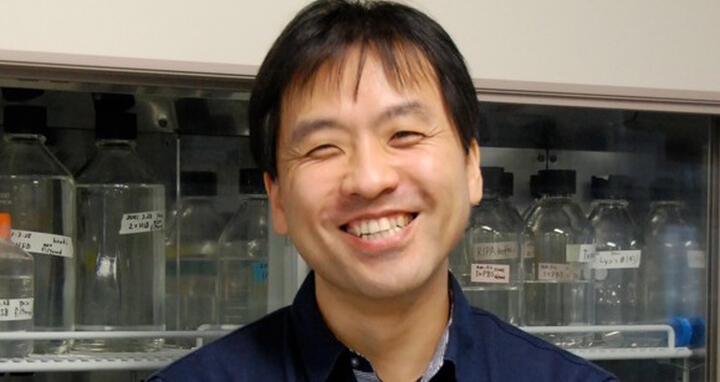Yasuyuki Fujita: helping cells recognise bad neighbours
In multicellular organisms cells perform specific functions, often in collaboration with their neighbours. Tumour cells break the rules of normal cell function, including in how they interact with surrounding cells. MDC alumnus and Professor Yasuyuki Fujita investigates these interactions aiming to find a way to help healthy cells recognise tumour cells and kill them.
When Yasu applied for a job in Professor Walter Birchmeier’s lab at the MDC in the mid-1990s, email wasn’t common like it is today. “I applied for the job by fax,” he says, “looking back it’s amazing that Walter accepted the application without an interview. I guess my good recommendations must have helped.”
Fujita Yasuyuki
Good advice
Yasu still remembers Walter’s advice during his postdoc at the MDC, especially the tip that one big paper is worth more than ten small ones. “Walter taught me what world class science is and that you should always aim high,” Yasu reflects. His major discovery during his postdoc with Walter was a protein called Hakai (meaning ‘destruction’ in Japanese), which can disrupt contacts between cells and allow them to move.
Now a professor at Hokkaido University in Japan, Yasu returned to the MDC to give a Career Pathways lecture. His advice to young researchers aspiring to become principal investigators (PIs) is that you need to have your own ideas, starting during your time as a postdoc. You can also gain experience in important skills like grant writing through your group leader. Yasu worked on a grant and went to the presentation for it during his postdoc in the Birchmeier lab.
From Postdoc to PI
“There’s a huge gap between postdoc and PI,” Yasu says, “for example you’ve never recruited anyone before.” But his advice is that developing these skills is achievable if your goal is a scientific career. The key criteria for PI jobs are your scientific ideas, “If you’re a passionate scientist you can learn how to write grants and supervise people.”
Yasu spent five and a half years at the MDC which he says was a good length of time to mature as a scientist and feel ready to start his own lab. His next position was as a group leader at University College London, UK. During the job interview Yasu had to do a two hour chalk-and-talk about his work.
Asking the right questions
“Giving talks at the MDC was good practice for answering critical questions,” he says. As well as a culture of constructive criticism, the seminar programmes at the MDC expose young scientists to a broad range of biological research. Yasu says he aimed to ask a question at every seminar he attended, “It’s a way to force yourself to focus and it helps you learn to communicate with diverse scientists.”
Yasu moved back to Japan with his family after eight years in London. He and his team at Hokkaido University study interactions between cells. “We focus on questions like: how do cells sense their neighbours and how do they react if their neighbour changes?”
Yasus research
Some of his experiments use epithelial cells, which are the type of cells involved in breast or lung cancer. They normally grow in a single layer in culture. When the interactions between cells change, tumour cells may be pushed out of the monolayer or killed by their neighbours.
Yasu and his team investigate how normal epithelial cells react to tumour cells in cell culture. They prepare normal and tumour cells, labelling one type with a coloured marker and then mixing them. That makes the tumour cells visually distinct from the surrounding cells. Then they can watch under the microscope how the normal cells react to the tumour cells in their midst.
“These cell competition studies reveal that normal cells are able to sense the presence of certain types of transformed cells and actively eliminate them from their community,” Yasu explains. This is relevant to the events that occur at the initial stage of tumorigenesis, a black box in cancer biology. Yasu hopes that this research will reveal ways to help cells recognise bad neighbours – tumour cells – and lead to new treatments for cancer.






